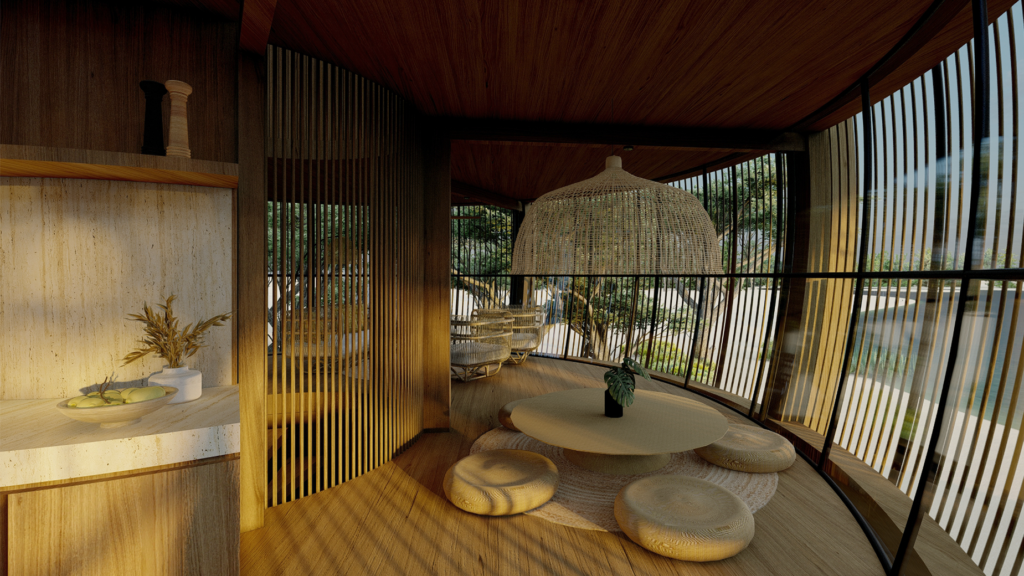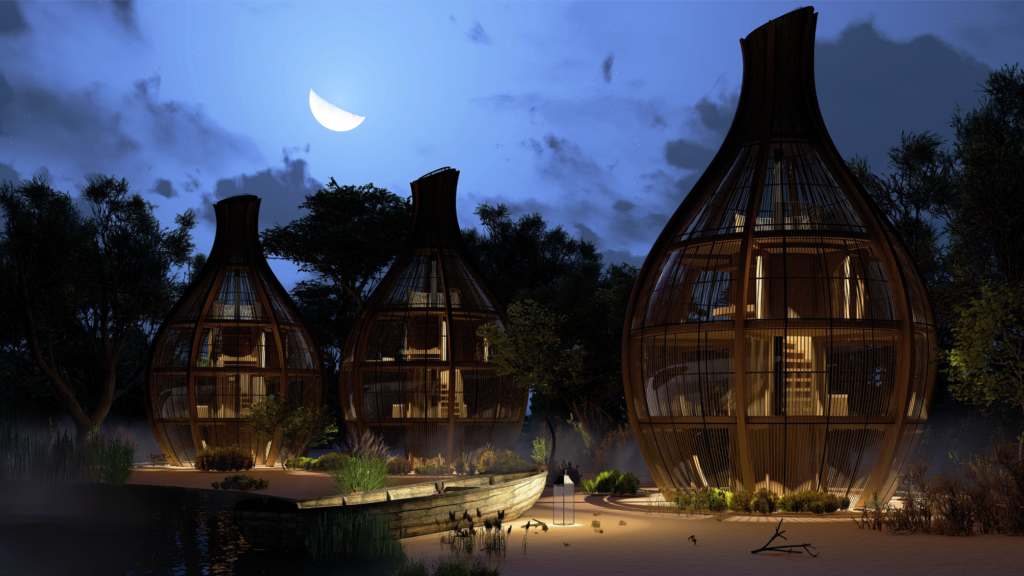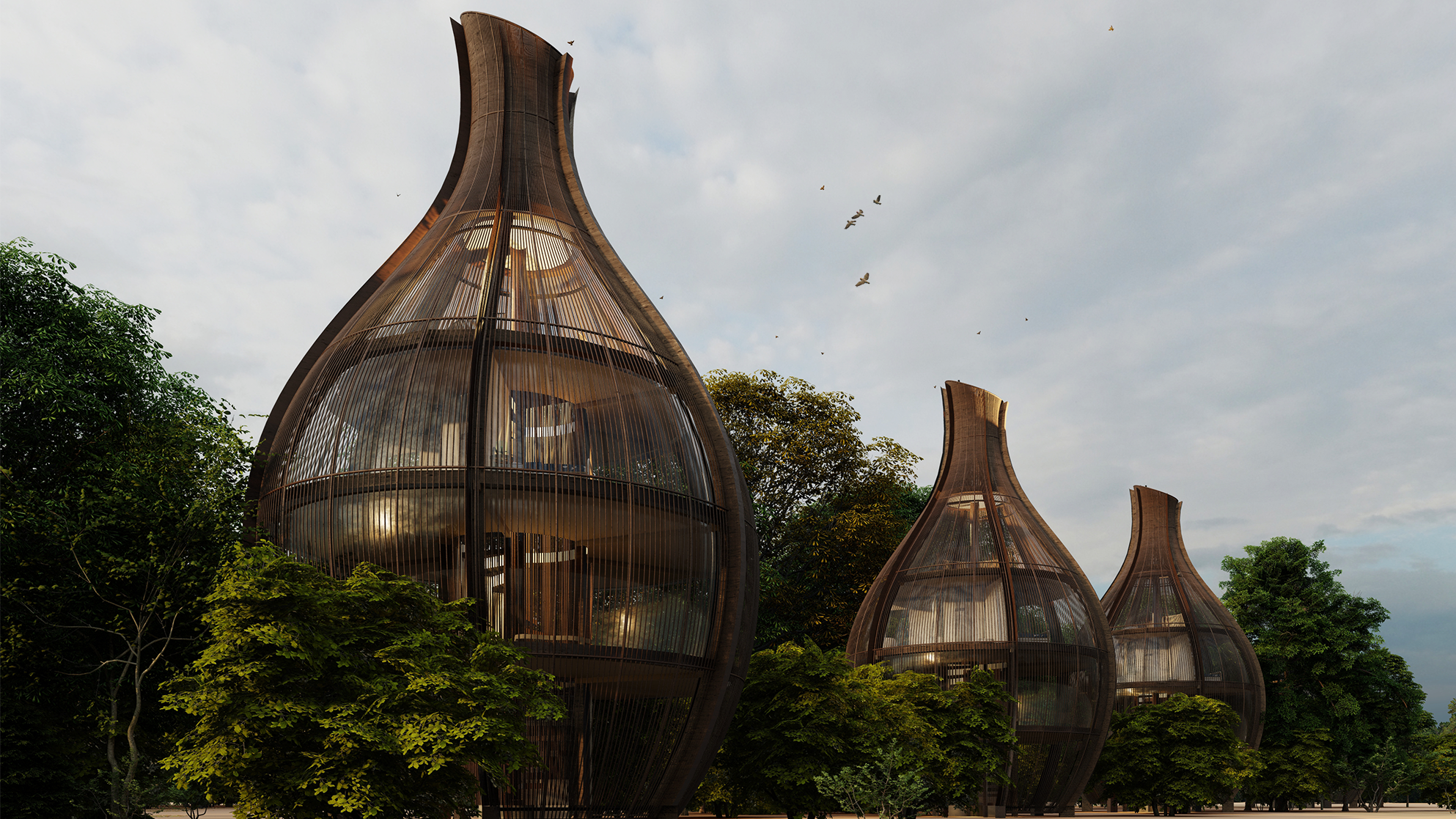In the vast expanse of the Al Qudra desert, Mansoor Al Harbi, an architecture student from the American University in Dubai, found a blueprint for a project that would catapult him onto the global stage. With the Areesh Retreat, he paid homage to his Emirati roots and the natural world, marrying traditional construction methods with sustainable practices. The result? A unique desert retreat that garnered him the title of Emerging Architect of the Year at the LIV Hospitality Design Awards 2022. Join us as we delve into Al Harbi’s creative process and the unique features of his award-winning project.

Could you tell us a bit about yourself and your professional journey? How did design come to have such an important role in your life?
Reflecting on my childhood provides a deeper understanding of the journey to becoming a student of architecture. I recall memories of my younger self creating miniature cities out of stone bricks and bits and pieces of ceramic tiles I found in my backyard. Funnily enough, I also have memories of myself assembling all sorts of structures out of palm fronds — the very same material used for the facade of the Areesh Retreat project.
Is there a philosophy, a vision, or a special process that influences how you approach design? Would you say that you apply it to your life as well?
My approach to design is to find and bridge a connection with nature. The most uplifting and inspiring spaces are ones that are intimately integrated with nature and integrate nature within them in parallel. Cultural context is also an essential factor that influences my design process, during which I ask “How can my people relate to the space I am in the process of creating?”. As for how these values are applied to my life, I enjoy spending time in nature to replenish my body and mind.

Photo credit: Mansoor Al Harbi
Why did you choose birds’ nests as inspiration for your design?
The birds’ nest being an inspiration for the design came naturally as a result of understanding and appreciating the site selected. It is also important to touch on the process behind the site selection, Al Qudra Desert, which features clusters of man-made lakes. Just a 45-minute drive from Dubai’s central downtown district, the lakes of the Al Qudra desert provide sanctuary for those wishing to disconnect from the bustle of the city and get to experience true stillness. The Al Qudra lakes are home to various species of birds native to the area, which then influenced my choosing birds’ nests as the inspiration for my design.
Your design shows care for sustainability and eco-friendly construction methods, is this something you want to keep up in the future?
Sustainability is a shared goal to aspire to on both an individual and global scale. It ensures the longevity of our own generation without compromising the needs of future generations. A sustainable solution does not necessarily mean incorporating the latest technologies into our designs, it can be as simple as borrowing and adopting the techniques and construction methods of our ancestors. Moreover, to be sustainable is an act of compassion towards all living beings who share our environment. So yes, sustainability is something I want to uphold in future projects.

Photo credit: Mansoor Al Harbi
What did you find most challenging while working on the project and what did you enjoy the most?
This project presented me with two challenges. Firstly, working with organic forms is very new to me; I had to ensure that the internal spaces are optimized for comfort yet remained functional within the structural envelope. The second challenge was to parametrically generate the form, structure, and facade system. This design method is new to me and presented its own set of challenges. The parametric design process, however, allowed me to explore various adaptations with ease, meaning any modifications to adapt to different spatial needs are easily generated. The challenges I faced granted me the opportunity to learn, grow, and develop my skill set — and that is where I found my enjoyment.
Is there a dream project you would like to see coming to life or a dream team you’d like to work with?
If granted the opportunity to see a project come to life, it would be the Areesh Retreat. A tremendous amount of effort, thought, and detail is afforded to all my projects. However, the Areesh Retreat is the one project I hold dear. As for a dream team I’d like to work with, I would say X Architects. They have always been a vital source of inspiration to me — I admire their philosophy and work ethic. Most importantly, their sensitive approach to culture and the environment is something that resonates with me.

Photo credit: Mansoor Al Harbi
What does winning the LIV Awards mean to you in terms of validation and recognition of your work in the architecture industry?
Winning the LIV Awards has brought about a newly instilled confidence in my abilities and potential, coupled with a renewed sense of vigour. It is the first stepping stone in my career as an architect, and I am truly grateful for this opportunity and the possibilities it grants me.
In the future, would you like to repurpose the idea behind this project?
There is so much inspiration to take from nature and cultural qualities that inform and add richness to the spaces we create. This project was conceived from both a cultural (areesh) and a site-specific element (birds’ nests). Nevertheless, given its adaptive and contextual approach, the concept behind this project may be reimagined and reoriented to meet the needs of future projects.

Photo credit: Mansoor Al Harbi
Talking to Al Harbi reveals an architect deeply rooted in his surroundings and culture, bringing a unique perspective to the design world. His project, the Areesh Retreat, serves as an emblem of an architectural philosophy that intertwines tradition with sustainability, exemplifying the possibility of a design future that respects and incorporates the wisdom of the past. As he moves forward in his career, Al Harbi carries with him the potential to redefine how we perceive and construct our built environment. With an approach that so beautifully amalgamates cultural heritage and ecological considerations, we can’t help but anticipate what he will bring to the design table next.










